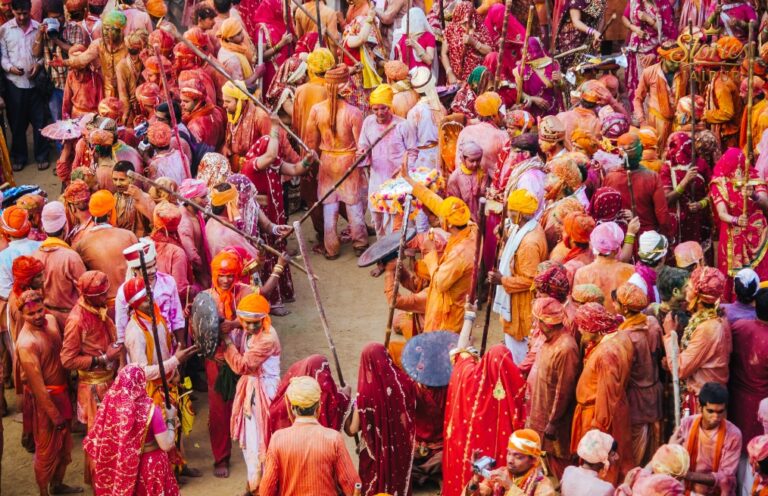Rajasthan, the “Land of Kings,” is a sensory delight, and nowhere is this more evident than in its stunning fashion. While its grand forts and desert landscapes are iconic, it’s the riot of colours in Rajasthani attire that truly captures the imagination. Far from a mere aesthetic choice, the vibrant palette of traditional Rajasthani clothing is deeply symbolic, reflecting the region’s rich history, diverse communities, and zest for life. These dazzling hues transform every garment into a walking masterpiece.
A Spectrum of Meaning
The colours worn in Rajasthan are rarely arbitrary. Each shade carries significance, often linked to emotions, occasions, or even social status. Red, for instance, is the colour of passion, marriage, and fertility, commonly seen in bridal wear. Yellow symbolises spring, happiness, and often signifies the auspicious occasion of Basant Panchami. Saffron, akin to the desert sun, represents courage and sacrifice. These symbolic meanings imbue the clothing with a deeper narrative, making it more than just fabric.
The Desert’s Bright Contrast
Ironically, the arid, muted tones of the Thar Desert inspire an explosion of colour in the local attire. This vibrant contrast creates a striking visual against the sandy backdrop. Imagine a woman in a bright fuchsia ghagra-choli against a dune, or a man in a brilliant orange turban riding through a dusty village – these images are quintessential Rajasthan. The colours are a defiant celebration of life in a challenging environment.
Tie-Dye Triumphs: Bandhani and Leheriya
The mastery of colour is best exemplified in Rajasthan’s renowned tie-dye techniques: Bandhani and Leheriya. Bandhani, with its intricate patterns of tiny dots, creates mesmerising visual textures in every imaginable colour combination. From deep blues to emerald greens and fiery reds, each dot bursts with life. Leheriya, with its distinctive wavy patterns, evokes the flow of water or the shifting desert sands, often seen in multiple contrasting shades that ripple across the fabric. These techniques are not just dyeing processes; they are artistic expressions of colour theory.
Embellishments that Radiate
Equally colourful and glittering embellishments often enhance the vibrant base colours. Gota Patti work, where metallic ribbons are appliquéd onto fabric, usually uses gold and silver to contrast with bold background hues. Mirror work (Shisha) catches the light, adding another dimension of sparkle and colour play. Even the threads used in intricate embroideries, like resham (silk thread work), are chosen for their ability to enhance and complement the garment’s overall vibrant palette.
The Pagri: A Crown of Colours
For men, the turban (pagri) is the ultimate display of colour. Beyond its practical purpose, the pagri is a symbol of honour and identity; its colours often signifying the wearer’s region, community, or even the event. The famed Panchrangi Pagri, a turban woven with five distinct colours, is a celebratory and visually stunning example of this tradition. The art of tying these multi-hued turbans is a skill passed down through generations, making each one a unique work of art.
Looking to explore Rajasthan’s vibrant fashion firsthand? The bustling markets of Jaipur, especially Johari Bazaar and Bapu Bazaar, are perfect places to witness these dazzling hues in action.

